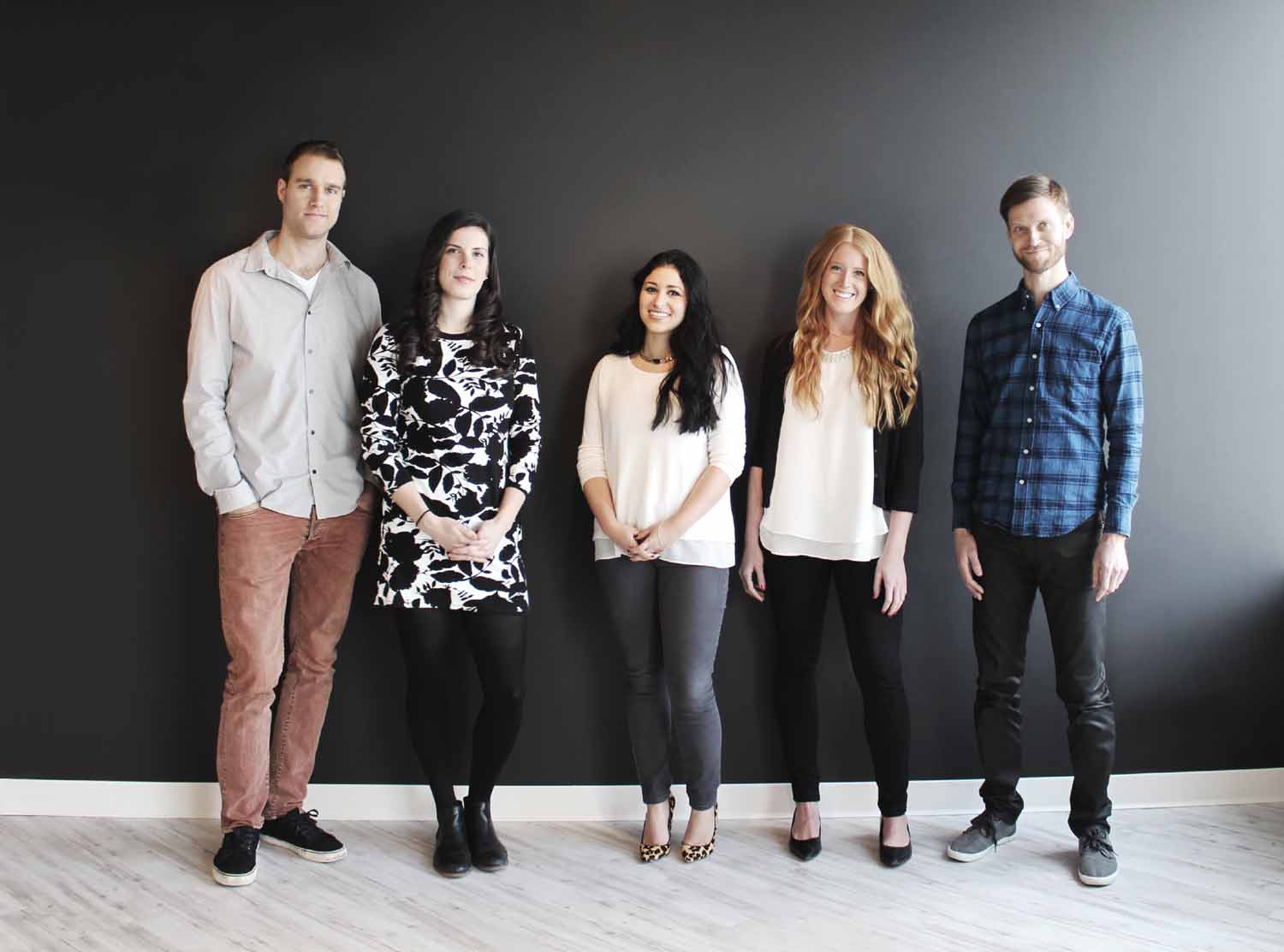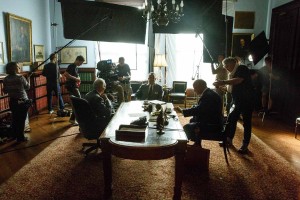
Kaminski felt exhilarated making Bridge of Spies: “I was thrilled by everything about this movie — the whole process. It’s what I always want to do — go on location, work with international crews. You are at the mercy of the weather but you use it to serve the story. I die on the stage set doing the same stuff day after day for three months. I lose my creativity.”
Bridge of Spies is about a series of headline-grabbing incidents that took place at the height of the Cold War during the late 1950s and early 1960s when the U.S. and the Soviet Union went eyeball to eyeball. Rudolf Abel, a top Soviet intelligence agent was arrested in New York by the FBI for espionage. A few years later, the U2, a top secret U.S. spy plane, was shot down flying over the Soviet Union and its pilot, Gary Powers, who survived, was put in prison.
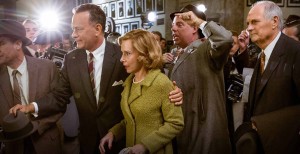
The film faithfully recounts the historical events, but also emphasizes the human drama of the people involved. Oscar-winning actor Tom Hanks, a Spielberg favorite, plays the straight-arrow but compassionate lawyer Donovan and Brit Mark Rylance, an award-winning stage actor, is Abel.
Bridge of Spies richly reimagines the period and its atmosphere, deepened by Kaminski’s psychologically probing cinematography. It was shot on location in New York City, on the throbbing streets of lower Manhattan and in the city’s subway, among many locales, and in various parts of Berlin.
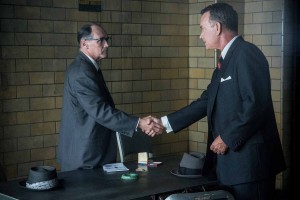 The plot of the movie pretty much follows the movement of Hanks’ attorney character, from the time he is recruited in New York to provide legal representation for Abel in his trial, to his journey several years later to Berlin to carry out the delicate mission of negotiating an exchange of the two prisoners, Abel and Powers. Berlin at the time was divided between the Soviet-controlled Eastern part of the city and the American-dominated Western half.
The plot of the movie pretty much follows the movement of Hanks’ attorney character, from the time he is recruited in New York to provide legal representation for Abel in his trial, to his journey several years later to Berlin to carry out the delicate mission of negotiating an exchange of the two prisoners, Abel and Powers. Berlin at the time was divided between the Soviet-controlled Eastern part of the city and the American-dominated Western half.
“It takes place in three different worlds, and I wanted to visually show very clear distinctions between them,” Kaminski noted. “The first part is America in the mid-1950s Eisenhower era, when there’s still a postwar nostalgia mood, so I made it somewhat warmer and more colorful, though there’s also a lot of paranoia. West Berlin is meanwhile on the brink when the Russians put up the Berlin wall. But it’s still more colorful than East Berlin. There are a lot of G.I.’s there bringing American culture so it’s more lively and more colorful so I used a lot of neon lighting on the streets. East Berlin is colder bleaker and more oppressive and I gave it a murky and bluish cast.”
The plot in the first half of the movie in NYC depicts a series of meetings that take place in jail between Donovan as the lawyer prepares to represent Abel who is in jail.
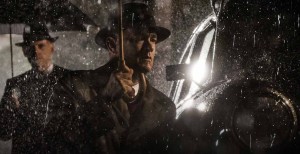 Kaminski started with a cold look for the initial encounters, gradually shifting to warmer lighting to show a budding mutual confidence between the lawyer and his Soviet spy client. “I tried capturing their evolving relationship from aloof and suspicious as they assess each other at the start,” he noted. “Then they go through a kind of a courtship that leads to a kind of friendship,” said the DP. He accomplished this by gradually changing the lighting, the level of brightness, using different filters which affected how much color he allowed. “The lighting becomes less violent and more warm, and the faces are more brightly lit,” he noted.
Kaminski started with a cold look for the initial encounters, gradually shifting to warmer lighting to show a budding mutual confidence between the lawyer and his Soviet spy client. “I tried capturing their evolving relationship from aloof and suspicious as they assess each other at the start,” he noted. “Then they go through a kind of a courtship that leads to a kind of friendship,” said the DP. He accomplished this by gradually changing the lighting, the level of brightness, using different filters which affected how much color he allowed. “The lighting becomes less violent and more warm, and the faces are more brightly lit,” he noted.
Filming in Berlin, it was literally cold – in terms of temperature. And rain and snow showed up in a number of scenes in the film. “But The rain and snow were created,” he explained. “It was fortunate we didn’t actually get that kind of bad weather, because you don’t want to work in those conditions. But we shot in Berlin in late November and there was no sunlight, it was always overcast, and that added to the sense of gloom the story needed.”
“And it was actually very frigid when we shot at the bridge for the finale,” he recalled. Filming was done on the Gleinicke Bridge connecting West and East, where the prisoner exchange really happened. “When I first got to see the bridge, I admit I was slightly disappointed, because the expectations were so high,” said Kaminski. “It’s a nice little bridge, but we needed to make the bridge seem really significant. It’s the climax of the film, and the movie after all is called Bridge of Spies,” the DP observed. “It had to be larger than life. You wanted to feel the weight of that structure because it was a big deal. It symbolized the Cold War.”
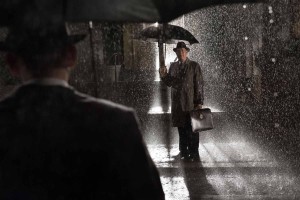 He used fog and smoke and differentiated the look of the two sides through composition and lighting. “I wanted the Eastern side to be more mysterious and threatening, you see shadowy figures in the background, and it’s not as bright as the American side. But Steven suggested that we also add a couple of searchlights. It needed to be more intimidating and fearful. It couldn’t just be shadowy and dark.”
He used fog and smoke and differentiated the look of the two sides through composition and lighting. “I wanted the Eastern side to be more mysterious and threatening, you see shadowy figures in the background, and it’s not as bright as the American side. But Steven suggested that we also add a couple of searchlights. It needed to be more intimidating and fearful. It couldn’t just be shadowy and dark.”
The important beats are more personal and emotional. Just before Abel is handed over, he sees Donovan for what we will be the last time. “It is a kind of a metaphor for the movie—two friends saying goodbye to each other,” said Kaminski. “I thought that didn’t have to be so dark. Abel calls out ‘Jim, Jim,’ and his eyes light up. You wanted to see that light.”
Kaminski shot on film with an Arriflex camera. He used Cooke miniS4 uncoated lenses that have recently been manufactured to have the look of older lenses, and to provide a historic and period feel to the cinematography. “They have softer contrast and flare out a bit,” he said “They are designed not to be perfect.”
Besides Oscars for Schindler’s List and Saving Private Ryan, he has been nominated for three other Spielberg films—Amistad, War Horse and Lincoln. (He also was nominated for a best cinematography Academy Award for the French film, The Diving Bell and the Butterfly.)
So what is it like doing yet another movie with Spielberg, after such a long collaboration? “We work with mutual respect – after so many years you know what’s expected,” he said. “There is never a specific shot list. But each day you come prepared, you don’t just walk out on the set, you’re working on a big motion picture feature so everything has to be ready. But that said, it’s also possible to sometimes improvise. What is exciting is how fresh and innovative Steven still is.”
Up next are three more Spielberg movies. The BFG is now in postproduction. Ready Player One, a sci-fi film, is in pre-production, and Indiana Jones 5 has been announced.


